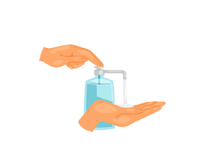Roxithromycin
Roxithromycin is a type of antibiotic that treats different bacterial infections, such as those affecting the lungs, skin, or urinary tract. It stops bacteria from making proteins they need to grow. Doctors often choose roxithromycin when penicillin is not suitable. It can help ease symptoms, support faster recovery, and lower the risk of complications. Since it is taken by mouth and is absorbed well, it is a popular and safe choice for treating infections under a doctor's care.
Available Medicine for Roxithromycin
Uses of Roxithromycin
- Treats Respiratory Infections: Helps treat lung and airway infections such as bronchitis, pneumonia, and sinusitis. By fighting harmful bacteria, it can ease symptoms like cough, fever, and congestion, and support a quicker recovery.
- Reduce Skin Infections: Supports healing of skin infections like cellulitis (affecting the deeper layer), erysipelas (affecting the skin surface), and wounds. Roxithromycin can reduce pain, redness, and swelling, stop bacteria from spreading, and support faster healing with less scarring.
- Relieve Urinary Tract Infections (UTIs): Treats urinary tract infections by stopping bacteria from growing. This can help relieve burning, pain, and frequent urination, and supports a safe recovery when used as directed.
How Roxithromycin Works
Roxithromycin works by inhibiting bacterial protein synthesis, preventing bacteria from growing and multiplying. It binds to the ribosomes of bacteria, blocking the production of essential proteins required for their survival. This leads to the elimination of bacteria, helping the body fight infections effectively.
Benefits of Roxithromycin
- Effective against a broad range of bacterial infections
- Faster recovery from respiratory and skin infections
- Less risk of antibiotic resistance compared to some other antibiotics
- Well-tolerated with fewer gastrointestinal side effects
- Available in convenient tablet and suspension forms
How to Take Roxithromycin
Roxithromycin should be taken as prescribed by a doctor. It is usually taken once or twice daily before meals with a full glass of water. Do not crush or chew the tablets. Complete the full course of treatment even if you start feeling better. Skipping doses may cause the infection to return.
Types of Dosage Available
- Roxithromycin 150 mg Tablets
- Roxithromycin 300 mg Tablets
- Roxithromycin Oral Suspension
Side Effects of Roxithromycin
- Nausea and vomiting
- Diarrhea
- Stomach pain
- Headache
- Skin rash
- Changes in liver enzyme levels (rare)
Safety Advice
- Do not take Roxithromycin if allergic to macrolide antibiotics
- Take it before meals for better absorption
- Avoid alcohol while on this medication
- Inform your doctor if you have liver or kidney issues
- Consult a doctor before use if pregnant or breastfeeding
Frequently Asked Questions (FAQs)
Q: How long does Roxithromycin take to work?
A. Roxithromycin usually starts working within a few hours, but noticeable improvement is seen within 2-3 days.
Q: Can Roxithromycin be taken with food?
A. It is best taken on an empty stomach, at least 30 minutes before or 2 hours after a meal, for better absorption.
Q: Can I stop taking Roxithromycin if I feel better?
A. No, you should complete the full course as prescribed to prevent bacterial resistance and recurrence of infection.
Q: Is Roxithromycin safe for children?
A. Yes, it is safe for children in prescribed doses. However, dosage and duration should be determined by a doctor.
Q: What should I do if I miss a dose?
A. If you miss a dose, take it as soon as possible. If it` s almost time for the next dose, skip the missed one and continue your regular schedule.
Related Salt
Disclaimer : Zeelab Pharmacy provides health information for knowledge only. Do not self-medicate. Always consult a qualified doctor before starting, stopping, or changing any medicine or treatment.
Download India's most affordable pharmacy app
- Compare with medicine prices
- Save upto 90% on your medicine bills

Temperature Controlled storage and delivery

Regular Sanitization

Disinfected Packaging














 Added!
Added!